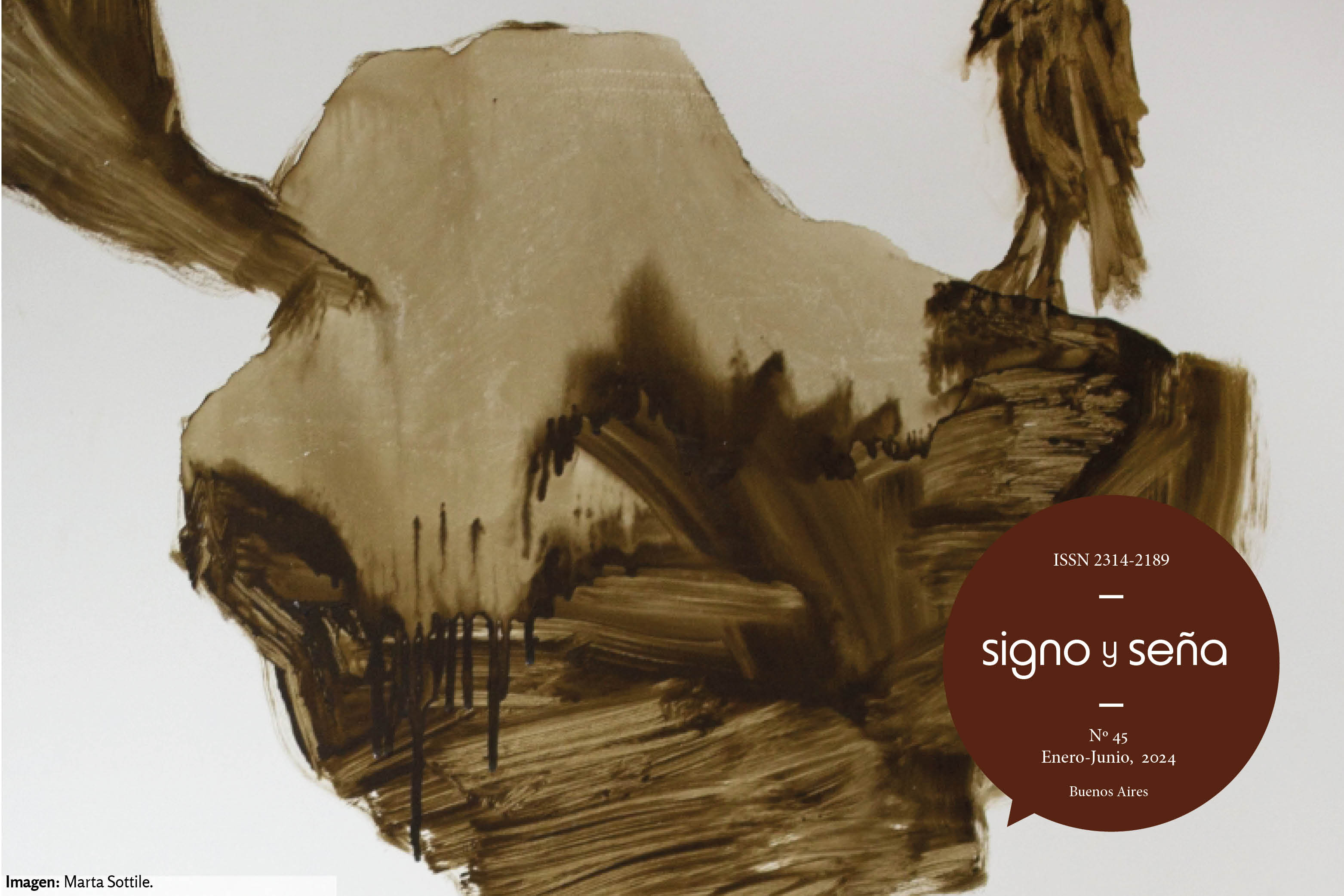Interrogativas alternativas en LSA: Una descripción preliminar
Abstract
The present work aims to make an initial description of the alternative interrogative constructions in Argentine Sign Language, a phenomenon that until now has not been addressed in the literature on this language. To this end, the general structural aspects, manual and non-manual, of this type of construction were investigated. We worked with a corpus made up of various sources: public YouTube videos, private conversations with Deaf people, interviews between Deaf people and data obtained from introspection and participant observation. The ELAN software was used for the analysis. It was observed that these constructions have a general structure of two coordinates and an interrogative form. From the analysis carried out, three possible forms of manifestation of alternative questions in LSA were identified: in the first one a manual disjunctive and an interrogative are used, in the second one a non-manual disjunctive and a manual interrogative appear, and in the third one both elements are expressed through non-manual features. Therefore, we can suggest that the manual disjunctive and interrogative components are not obligatory, but the non-manual features are. Finally, some variants of manual interrogative particles were identified.Downloads
References
Alisedo, Graciela. 1997. Diccionario de Lengua de Señas Argentina - Español. República Argentina, Ministerio de Cultura y Educación de la Nación.
Cecchetto, Carlo. 2012. “Sentence types”. En Sign Languages. Handbooks of Linguistics and Communication Science, editado por Roland Pfau, Markus Steinbach Markus y Bencie Woll, Bencie, 227-244. Berlin: Mouton de Gruyter.
Cecchetto, Carlo y Meltem Kelepir. 2017. “Interrogatives”. En SignGram Blueprint. A Guide to Sign Language Grammar Writing, dirigido por Josep Quer, Carlo Cecchetto, Caterina Donati, Carlo Geraci, Meltem Kelepir, Roland Pfau & Markus Steinbach, 290-304. Berlin/Boston: De Gruyter Mouton.
Crasborn, Onno y Han Sloetjes. 2008. “Enhanced ELAN functionality for sign language corpora”. En Proceedings of LREC 2008, Sixth International Conference on Language Resources and Evaluation.
Cvejanov, Sandra y Rocío A. Martínez. 2022. Introducción al dossier “Estudios gramaticales sobre lenguas de señas de América Latina y el Caribe. Parte I”. Quintú Quimün - Revista de lingüística 6. https://doi.org/10.5281/zenodo.7376393.
Davidson, Kathryn. 2013. “‘And’ or ‘or’: General use coordination in ASL”. Semantics & Pragmatics 6: 1-44.
Fischer, Susan D. 2006. “Questions and negation in American Sign Language”. En Sign Language Typology Series No. 1. Interrogative and negative constructions, editado por Ulrike Zeshan, 165-197. Nijmegen: Ishara Press.
Massone, María Ignacia. 1993. Lengua de Señas Argentina: Primer Diccionario Bilingüe. Buenos Aires: Editorial Sopena.
Massone, María Ignacia. 2000. La conversación en Lengua de Señas Argentina. Buenos Aires: Libros en Red.
Morgan, Michael W. 2006. “Interrogatives and negatives in Japanese Sign Language (JSL)”. En Sign Language Typology Series No. 1. Interrogative and negative constructions, editado por Ulrike Zeshan, 91-127. Nijmegen: Ishara Press.
Veinberg, Silvana. 1993. “La función lingüística de los rasgos no-manuales en la aseveración, la negación y la interrogación en la LSA”. Signo y Seña 2: 101-126.
Veinberg, Silvana y María Ignacia Massone. 1992. “Lengua de señas Argentina: Los rasgos no manuales”. Fonoaudiológica 38.1: 68-74.
Zeshan, Ulrike. 2006a. “Negative and interrogative constructions in sign languages: A case study in sign language typology”. En Sign Language Typology Series No. 1. Interrogative and negative constructions, editado por Ulrike Zeshan, 28-68. Nijmegen: Ishara Press.
Zeshan, Ulrike. 2006b. “Negative and interrogative structures in Turkish Sign Language (TID)”. En Sign Language Typology Series No. 1. Interrogative and negative constructions, editado por Ulrike Zeshan, 130-164. Nijmegen: Ishara Press.
- Authors keep the copyright and give the journal the right of the first publication, with the work registered with the Creative Commons Attribution-ShareAlike 4.0 International License, which allows third parties to use what is published whenever they mention the authorship of the work and the first publication in this magazine.
- Authors can make other independent and additional contractual agreements for the non-exclusive distribution of the article published in this journal (eg, include it in an institutional repository or publish it in a book) as long as they clearly indicate that the work It was published for the first time in this magazine.
- Authors are allowed and recommended to publish their work on the Internet (for example on institutional or personal pages).

















